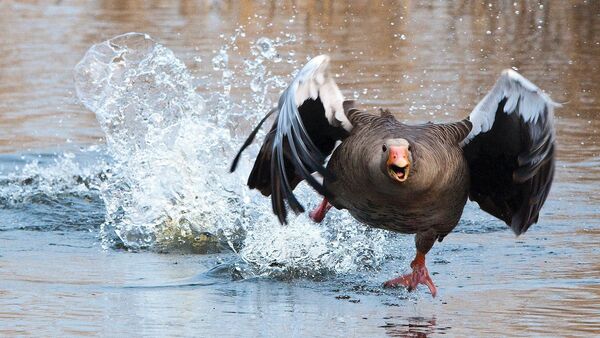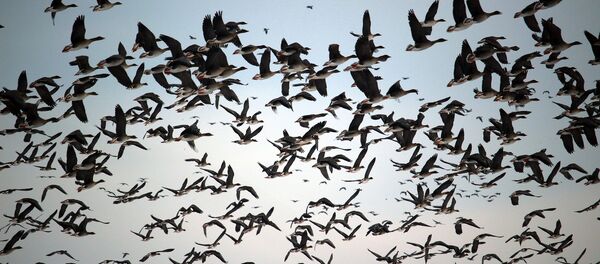Earlier this week, a gigantic southbound flock of several hundred thousand barnacle geese landed in the village of Elimäki. Although Finnish fields are known to attract thousands of migrating geese, a gaggle that big is considered extraordinarily large.
"It's an exceptionally large gaggle. We've never seen 300,000 barnacle geese arrive at the exact same spot," Markku Mikkola-Roos from the Finnish Environment Institute told Finnish national broadcaster Yle. According to him, the actual number of winged visitors could be still higher, as bird counters' estimates tend to err on the side of caution.
"Wherever the geese went, harvests were lost. We had high hopes for this year's yield. Now those crops can't even be used as animal feed," Lasse Hannola, a local farmer who grows wheat and oats, lamented, according to Yle. By his own admission, he intended to leave the ruined crops, hoping that the droppings will serve as fertilizer for next year.
According to local agriculturalists, the torrential guano fallout only added insult to injury, as crops previously suffered considerable damage from the soaking wet summer. Hannola pointed out that areas that were spared from heavy floods have since been ruined by geese.
Growing flocks of geese have been spotted in southern Finland since 2010, although the recent air invasion is, by far, the largest one, according to researchers. Mikkola-Roos pointed out that the geese arrived from their nesting areas in the Russian tundra near the Barents Sea and were headed south to the coasts of the Netherlands, Denmark and the UK.
"Previously, they flew right over Finland after they first stopped on the Russian side. But now that there fewer open fields in Russia, the geese have switched to Finnish ones," Mikkola-Roos said.
By contrast, identical flocks of geese heading home to the polar wilderness are spotted in Russia each spring. The little town of Kologriv in Kostroma Region, where thousands of geese make a stopover, has in recent years earned the honorable title of "goose capital of Russia," attracting numerous birdwatchers. Correspondingly, "the day of the goose" is held in May to celebrate the return of the geese.





